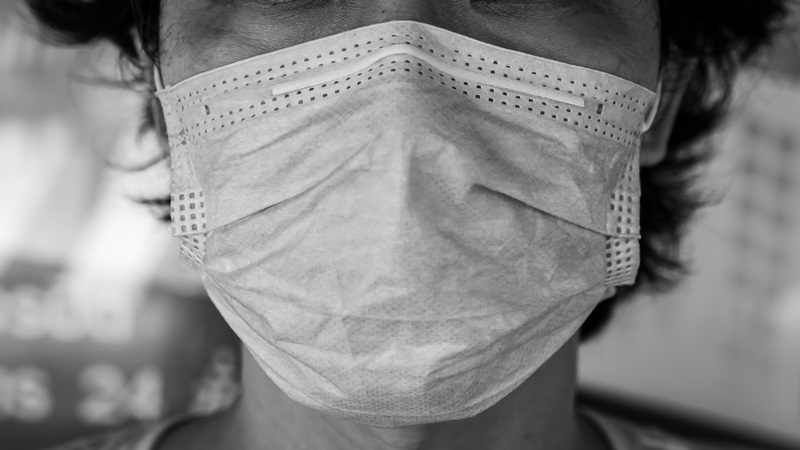Sexual violence is a well-known side effect of emergencies, and the COVID-19 pandemic is no exception. People already affected by existing humanitarian emergencies presently face a serious aggravation of intersecting vulnerabilities to health, economic and protection risks.
Among these protection threats there is a clear and increased risk of violence, neglect, sexual exploitation and abuse, discrimination and social exclusion as a result of the compounding impacts of the virus and its secondary effects.
News headlines from around the world flag that the pandemic is already causing increased risk and actual events of sexual- and gender-based violence. From China to the UK and many places in between, there are reports of 60 – 700% increase in calls to domestic violence helplines. In South Africa, the President has issued a statement noting that ‘[s]ince the country entered alert Level 3 of the COVID-19 lockdown on 1 June, there has been a surge in …femicide’. Canada’s network of 550 domestic violence safe houses were overwhelmed within hours of the imposition of a national lockdown. The Kenyan National Council on Administration of Justice has issued a statement noting a ‘significant spike’ in sexual offences since March 2020.
As we mark the International Day for Elimination of Conflict Related Sexual Violence against the backdrop of this global public health crisis, it is timely that we reflect on how the pandemic is impacting sexual violence in conflict and other situations of violence.
When a lack of data speaks volumes
Data on how the pandemic has impacted the prevalence and patterns of sexual violence in conflict is still scarce. But when this type of data is hard to come by, it usually tells us that the space for survivors to seek care and disclose their experience is shrinking. And this is deeply worrying.
We must ensure that our response is not contingent upon increased individual disclosure, but instead remain accountable to victims or survivors in light of the widespread nature of this problem. In other words, we need to reverse the burden of proof for sexual violence.
In humanitarian settings, the risks of sexual violence are increasing, yet the possibility of accessing services for sexual violence response is decreasing because of a reduced field presence, reduced services or because financial, human and technical resources have been directed to the COVID-19 response, sometimes at the expense of sexual and reproductive health services. For example, we see increased movement restrictions, coupled with people telling us that they fear going to a clinic will expose them to the virus. This means that a victim or survivor may not be able to reach healthcare facilities in the critical 72-hour post-rape window.
In parallel, the ability of humanitarian agencies, including ours, to monitor and provide support may also be decreasing. This also impacts data; services which were once the key entry point for survivors of sexual violence to disclose information and access care may now be harder than ever to access. This means that when we see the data on the number of cases diminish, it is a false representation of the real numbers. Again, this is deeply worrying because these factors will make hazard, trend and prevalence mapping and the delivery of quality sexual violence response even harder over time, therefore creating a backslide in our progress to address sexual and other forms of gender-based violence to date.
While we won’t likely see numbers confirming an increased prevalence of sexual violence for some time, we have to assume that the prevalence is at least as high as during pre-COVID-19 times, while also recognizing and planning for increased risk factors. We already know that sexual violence tends to increase in emergencies and have seen evidence of this happening during the current pandemic. Access to lifesaving sexual violence services as well as prevention efforts must therefore continue. These efforts need to be further prioritized and must under no circumstance be neglected during these trying times. We owe this to the women, men, boys and girls who are survivors or are at risk of sexual violence.
Sexual and reproductive health care, mental health and psychosocial support, and protection services for survivors of sexual violence are ICRC priorities and we will continue to engage in a dialogue on sexual violence in conflict as a war crime.
This article is also available in French.
See also
- Helen Durham, Shining a spotlight on sexual violence in war: The 2018 Nobel Peace Prize, October 11, 2018
- Workshop: Engaging with students and professors on the issue of sexual violence in armed conflicts, April 15, 2016
- e-Briefing: Sexual violence in armed conflict, April 8, 2016






It’s a good, interesting and thought provoking script. I agree with the concept that lack of data due to COVID 19 PANDEMIC does not reflect actual volume of sexual violence incidences, however, if some parameters for reversing the burden of proof r described in more elaborated form, it will be beneficial to devise a strategy to deal with such cases in the present covid 19 pandemic.
Kind regards
I don’t want to play down the problem of violence against woman. It’s huge. But I want to point to some problematic aspects of this article. First of all I have the impression that the writer wasn’t aware of the correlation/cause trap. An increase of more phone calls doesn’t automatically mean that there was an increase of domestic violence. The average reader will do this connection in his or her mind and it’s the responsibility of the writer to point to this. It’s even possible that the domestic violence DECREASED, because families have found more time to connect or appreciate each other. But we don’t have data. Therefore it’s an assumption as Ms. Sutrich writes…..we have to assume that the prevalence is at least as high as during pre-COVID-19 times, while also recognizing and planning for increased risk factors.
But still this sentence doesn’t stand on firm ground. We don’t HAVE to assume that it’s as high as during pre COVID-19 times. It’s still possible that the domestic violence decreased. The the argument that in other crisis like war the gender-based violence increased is by the way also not a strong case for the thesis that COVID-19 is responsible for a increase of violence. You can’t compare a war situation to a lockdown. I hope there will be more studies after the crisis to test this thesis as the are more pandemics lurking around the corner.